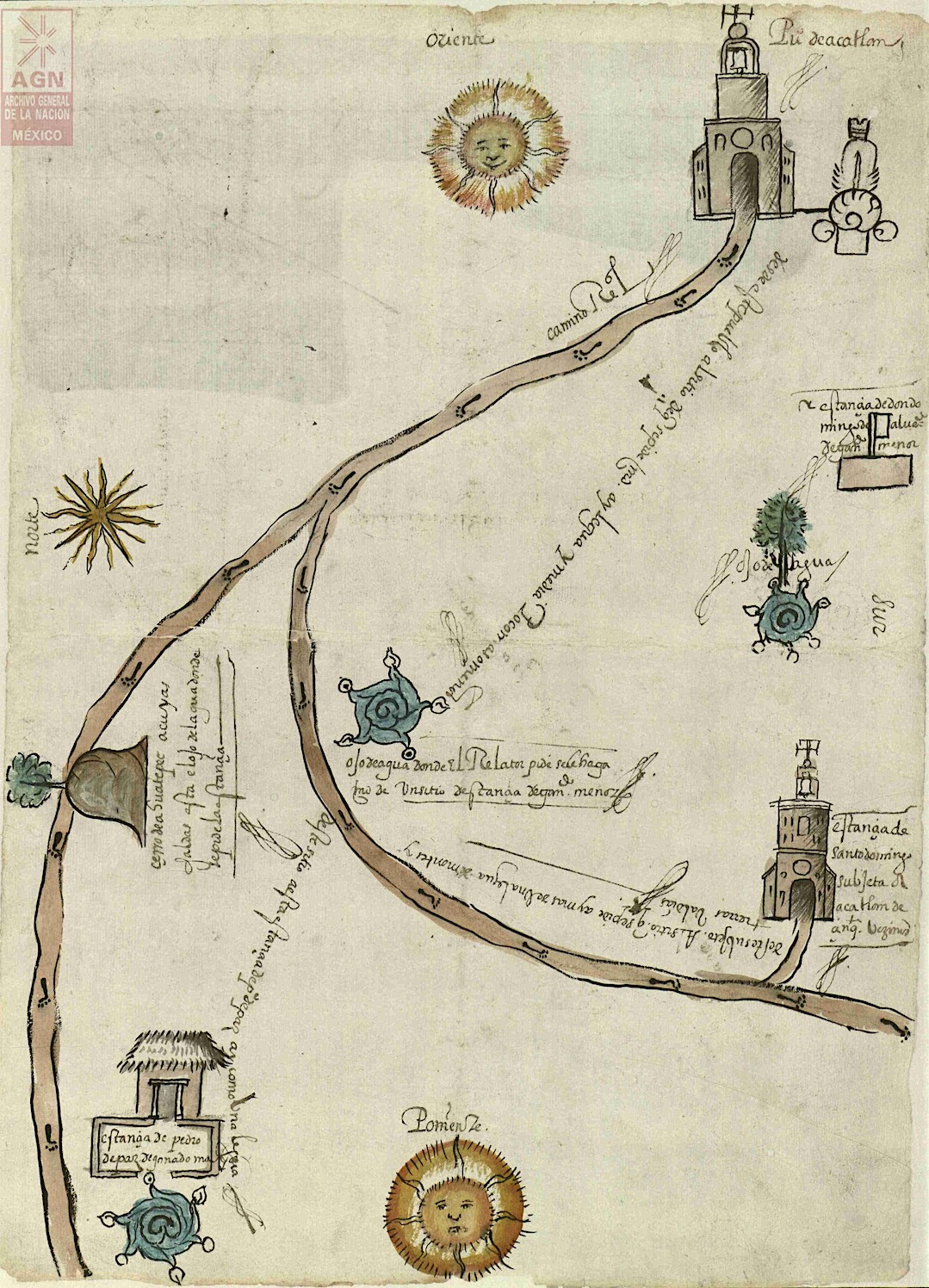Ahuatepec (T2680:19:9r)
This is a compound glyph naming the hill or mountain known as Ahuatepec. This place name combines two elements. One is an oak tree (ahuatl) which is seen growing from the summit of the second element. This is the hill/mountain (tepetl) that provides the second part of the name. The locative -c (in, on, etc.) is not visualized, though the hill is a semantic indicator for “place of.” The black-outlined mountain is colored in a mixture of greens and browns. It has some contour suggested by black lines. While there is a resemblance to earlier, more traditional depictions of tepetl, it is simplified and betrays at least some European influence. The oak tree is outlined in black, too, with its foliage painted green. The artist has given its leafy nature a naturalistic, if not detailed, look.
Robert Haskett
Ahuatepec, in the Tulancingo region and in the vicinity of the pueblo of Acatlan, was a focal point in a request for a grant of a sitio de estancia para ganado menor (site for a small livestock—in this case cabras [goats]—ranch) requested by the Spaniard Melchor de Carejas. On the map, a Spanish gloss informs the reader that on the lower slopes of the hill there is an ojo de agua (spring). There are indeed three springs depicted on the map. The one in question here is shown to the south of Ahuatepec and across a road (painted brown with black human footprints inside of it at intervals; see the historical contextualizing image). Another gloss identifies this spring as the featured source of water. The artist of the map is identified as a man—possibly Indigenous—named Andrés Rafael. The map dates from between 1564-1573.
Robert Haskett
çerro de ahuatepec
Cerro de Ahuatepec
Robert Haskett
1564-1573
Robert
oak trees, robles, hills, mountains, cerros, montañas, nombres de lugares
Source of image: https://pixabay.com/es/photos/gerichtseiche-roble-%C3%A1rbol-2314686/ -- Imagen de Gerichtseiche, Roble y Árbol. De uso gratuito.

ahua(tl), oak tree, https://nahuatl.wired-humanities.org/content/ahuatl-0
tepe(tl), hill, mountain, https://nahuatl.wired-humanities.org/content/tepetl
-c, in, at, on, https://nahuatl.wired-humanities.org/content/c
en el cerro del roble
Robert Haskett
Single-page codex, Archivo General de la Nación, México, Ramo de Tierras Vol. 2680, Exp. 19, Fol. 9r.
The Archivo General de la Nación (AGN), México, holds the original manuscript. This image is published here under a Creative Commons license, asking that you cite the AGN and this Visual Lexicon of Aztec Hieroglyphs.







